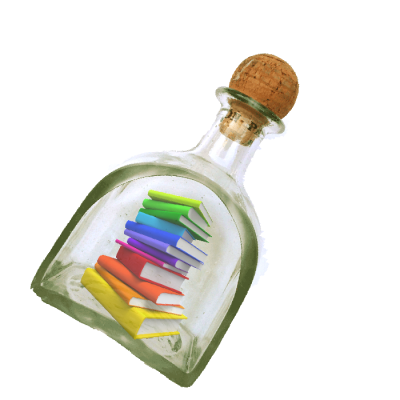It’s a double whammy, folks, because we here at Tequila Mockingbird love a good literary device. So buckle up, because we’re getting into it!
Sharp Objects provides a chilling look into the life of Camille Preaker, a small-time Chicago journalist, as she re-encounters her childhood in the wake of a grisly string of murders in her hometown. Gillian Flynn uses an in-depth first-person narrative to offer readers a glimpse into life in Wind Gap, the Missouri town where Camille grew up, and from the very start it is clear that there is something a bit off about Camille.

She is presented as this put-together, clean-cut character who lives a relatively mundane life. But, as the title of this work suggests, there is more than meets the eye when it comes to our Southern not-so-belle. A semic code is established very early in the beginning regarding her skin. She has a certain fixation with writing on her arm, which we see after her discussion of Ann Nash:
“Then I lifted up the sleeve of my shirt and wrote her full name – Ann Marie Nash – in lush blue on the inside of my arm.” (34)
From there, the references to skin only escalate. It becomes apparent that she has certain preferences regarding her body, which is outlined by her hate for showers. She says that showers make her feel uncomfortable, and she exclusively takes baths. Her mother even offers her a room with a tub because she knows this. From here, it escalates to full scale personification:
“I was not ready to speak with my mother. My skin hummed.” (40)
She starts to refer to her skin in this way, like it is some living, thriving thing that exists separately from herself. The names she writes on her skin take on abilities of their own, often “glowing” or becoming “hot”. It all comes to a head on page 94, when we find out the real truth:
“I am a cutter, you see. Also a snipper, a slicer, a carver, a jabber. I am a very special case. I have a purpose. My skin, you see, screams.” (94)

Heavy, right?
This section put it all in perspective, and changes the way the reader reads into these tidbits throughout the rest of the book. Every mention of skin, every instance of bodily fixation, ties back into something greater. Camille is still writing things on herself on page 222, where she writes Meredith’s name on her leg, but the reader can unpack the information with a greater sense of understanding.
But there is something else that sticks out as a mode of repetition that doesn’t revolve around bodily harm. It’s hidden behind the repetition of the symbol of skin, and all of the nasty, juicy ideas that come with it.

It lies in how Camille views the female sex. Predominantly girls, but women too. She seems fixated on the idea of rugged, self-starting women – girls who go against the grain. This becomes apparent when she comes across Natalie Keane’s missing poster:
“The photo showed a dark-eyed girl with a feral grin and too much hair for her head. The kind of girl who’d be described by teachers as a ‘handful’. I liked her.” (12)
At first, it just seems like Camille has a certain preference for girls who break the mold, who don’t necessary follow the social rules of Wind Gap as they were laid out for them. However, it becomes a pattern later when Camille is discussing Amma:
“But that violent streak – the tantrum, the smacking of her friend, and now this ugliness. It suddenly reminded me of the stories about Ann and Natalie.” (159)
Camille seems to group similarly defiant girls in her mind, and two of these girls who feature largely in her observations happen to be victims of the Wind Gap killer. It seemed odd that Amma would be included here, because she was always presented before as some kind of spoiled princess, and in no way outwardly “defiant”. Could this have been foreshadowing for Amma being a victim?
As it turned out, it foreshadowed the exact opposite. And who doesn’t love a good red herring?


I like how Dina talks about the relationship Camille has with her skin. It is a complicated one, and very important to the story in my opinion. When Camille enters back into Wind Gap, her skin seems to “light up” and irritate her more than than it did before. Camille seems to be defined as a person by her scars, whether she likes them or not. Camille is mentioned talking poorly about her scars and not wanting them there, but in a dark, twisted, sense, she also might subconciously like them because they are part of her and define who she is in a way.
LikeLike
I find it interesting how the skin cutting is almost justified by the symbolic code, representing her control over herself and her imperfections. However, if we take away the symbolic code and just look at it through the lens of the common cultural code, THAT’S FREAKY! How is this violence against her skin suppose to represent anything good for her. Unpacking that, is it possible that Camille is justifying something to herself…and that possibly she’s some unreliable narrator if she goes so far against the cultural code.
LikeLike
Camille was raised in the household right out of Norman Rockwell. Everything had it’s place, every nail manicured, all blemishes covered. But with Camille’s elaborate scars, those blemishes are not so easily concealed. No matter what Adora does, dresses up her daughter to keep her as normal as possible, her scars are visible. And if she covers Camille up to keep her flaws under wraps, it appears abnormal and suspicious. Camille’s mental illness becomes the bain of Adora’s existence. Camille has tried to fight her inflictions for years, but to no avail. The need cut has taken over every aspect of her life. Camille takes pride in being closed off, and gritty, but how much of that is a conscious decision? I believe Camille enjoys taunting her mother with her instability, but she can’t really take credit for that can she?
LikeLike